As part of its charitable objectives, The Haileybury Society regularly provides Travel Grants to OHs seeking to enhance elements of their study or to enhance their educational or cultural development. We were delighted recently to assist Ellie Owen (LS & Ha 13) who is preparing for her history degreee. Here, Ellie takes up her story…
Thanks to the generosity of the Haileybury Society, I spent three days in Toulouse, with day trips to Albi and Carcassonne, to help expand my knowledge and interest in the Albigensian crusade and mediaeval period in the south of France, having studied it during my undergraduate History degree.
Toulouse – Day 1: Basilica of Saint-Sernin
Arriving in Toulouse, the base for the week, I immediately wanted to walk off the journey so I walked from the hotel to the east of the city where there are beautiful Japanese gardens and a bakery serving sandwiches – both providing the perfect start to the trip.
I then tracked back towards the centre for the first site of the trip – the Basilica of Saint-Sernin, a UNESCO World Heritage site on the route to Santiago de Compostela, speaking to its religious significance.
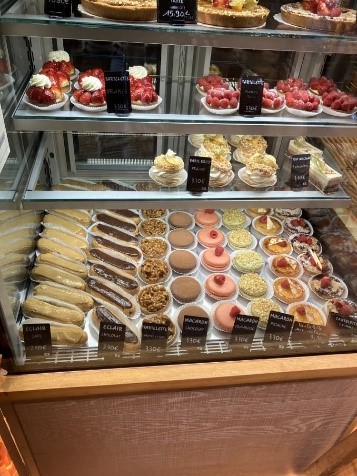
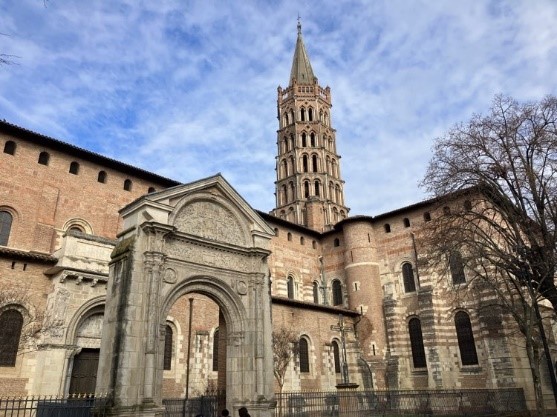
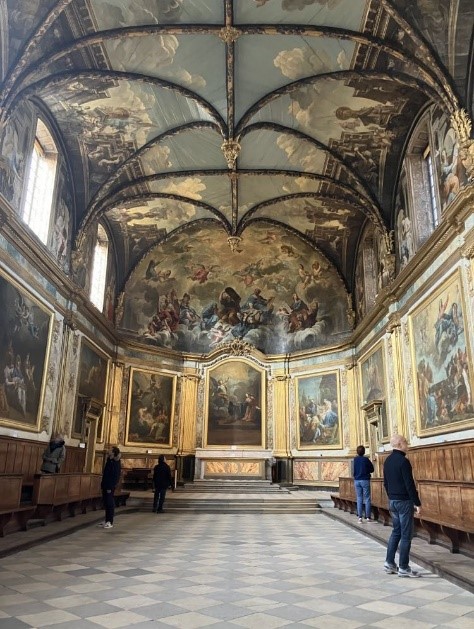
From the outside, I found the contrast between the Romanesque base and the Gothic bell tower quite striking. Inside, the basilica follows a traditional pilgrimage structure, most notably through the addition of a walkway around the nave to allow passing pilgrims to observe the chapel without interrupting any masses taking place within.
The interior was amazing, and just a small taste of what was to come in the rest of the week (hint – a lot of churches). Next, I walked along towards the Place du Capitole, the city’s main square, when I happened upon the Chapel des Carmelites, an unexpected discovery which was one of the highlights of my trip. I spent the rest of the day soaking in the buildings in the centre, before heading to a very enjoyable and delicious wine and cheese tasting, finishing off a very French day.
Toulouse – Day 2:?Chapel des Carmelites and seeing in 2024 in a “French” pub
The next day, I attempted to soak in the famous Victor Hugo marche, a covered market in the centre of Toulouse. But, as it was New Year’s Eve, my backpack and I struggled to find space between the families picking up last-minute supplies and locals enjoying wine and charcuterie at the side of the stands. So I opted for a quieter lunch option in a lovely cafe adjacent to the Chapel des Carmelites, an oasis of tranquillity compared to the hectic market.
Here I enjoyed a camembert fondue and prosciutto with brioche bread, fuelling me up for yet another church, the Couvent des Jacobins, which claims to be the mother church of the Dominican order and is best known for housing the relics of Thomas Aquinas. Construction was actually started by the future Saint Dominic in 1215 as a reaction against the heresy of the Cathars.
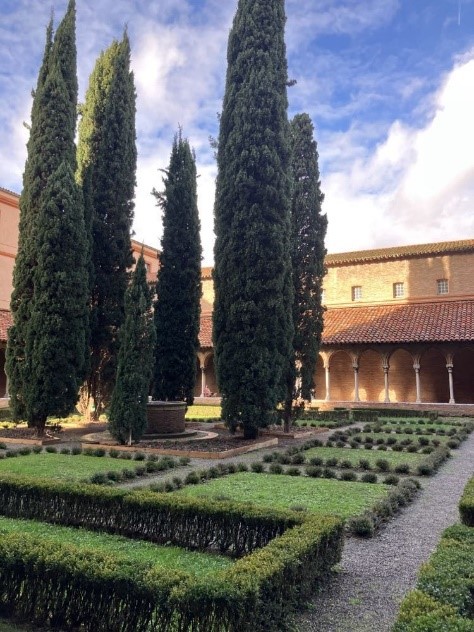
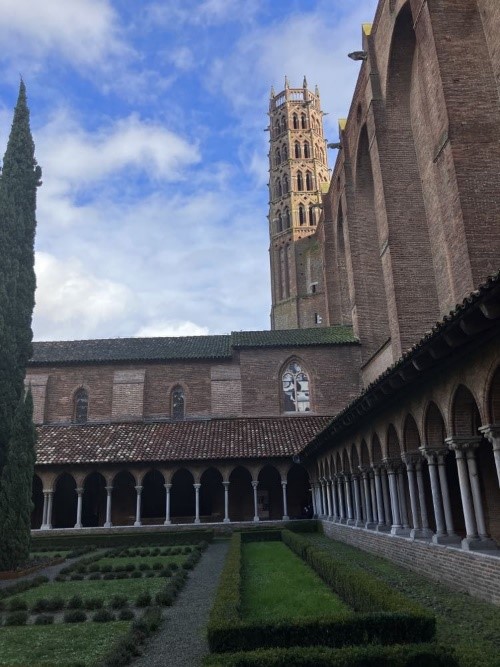
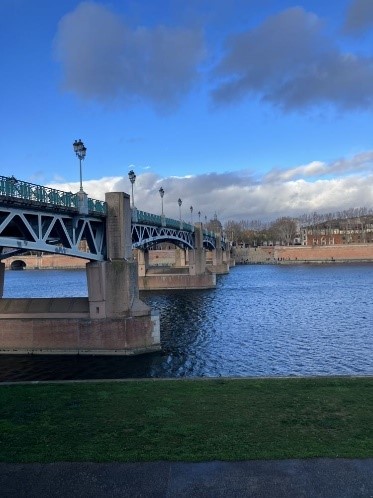
The interior and grounds of the complex provided an interesting insight into the more recent history of religion in France, as following the French revolution in 1789, the Dominican order was dissolved and this building became the property of the city of Toulouse. In 1810, Napoleon requisitioned the complex and converted it into army barracks, destroying the stained-glass windows and whitewashing the mediaeval paintings in the process. The information provided within showed how extensive restoration work across the 20th century sought to recover some of the original features and preserve them for future generations.
Before settling down into celebrating the new year, I walked along the banks of the River Garonne and enjoyed the views of the bridges and the city itself in the background. New Years is traditionally a family affair in France, so options were somewhat limited. Nonetheless, I started my evening with a very tasty but very cold drink outside in the main square, before settling down into a very “French” pub called O’Briens to call in 2024.
Toulouse – Day 3: the cathedral, Albigensians and the rugby ground
Another day brought another church, this time the Cathedral of Toulouse, whose construction and architecture can reveal much about the political effects of the Albigensian crusade.
One of the triggers of the crusade was the murder of the Pope’s legate, Pierre de Castelnau, in 1208, allegedly by Raymond VI, Count of Toulouse, who had resisted the Pope’s attempts at peaceful conversion of the Cathars. As he died in 1222, it was his son, Raymond VII, who signed the 1229 Treaty of Paris to end the Albigensian crusade and allow the Inquisition absolute power over suspected heretics.
It also meant that Raymond ceded half of his territory to the Crown of France, and was forced to swear allegiance to King Louis IX. Now as a vassal of the French crown, he was ordered to hunt down the Cathars, who had been left without any political or military protection. Moreover, when his daughter and son-in-law died without an heir in 1271, the title and lands of the counts of Toulouse lapsed into the hands of the French Crown.
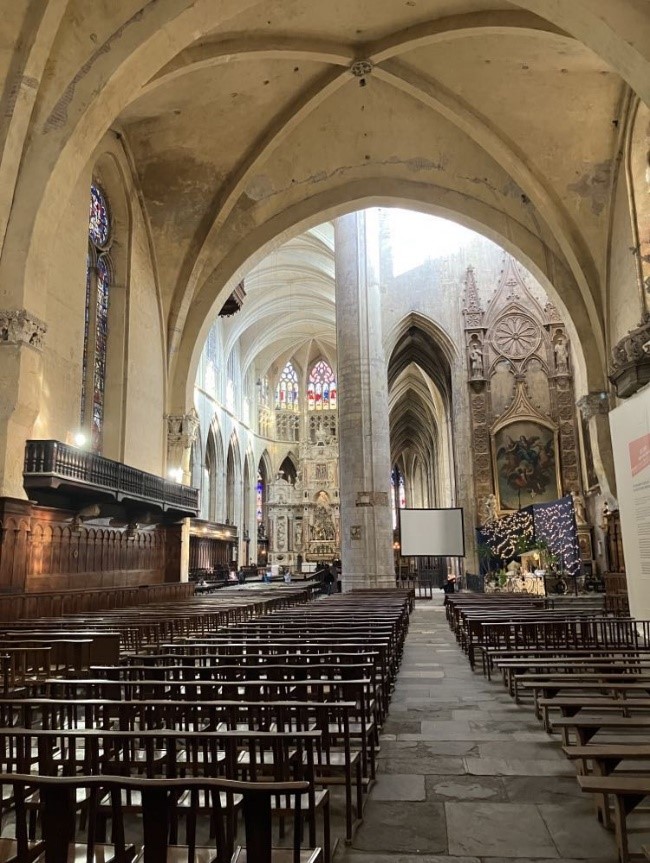
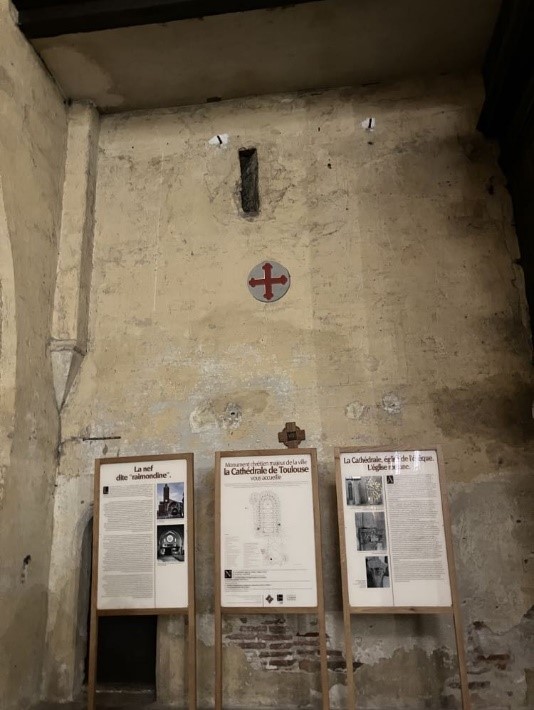
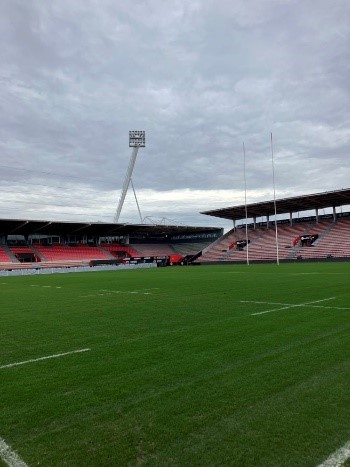
The following year, construction began on the cathedral of Toulouse, which was made in the new northern French Gothic style, to signal the adherence of Toulouse to France and intimidate the remaining heretics in the region. The importance of the crusades to politics, control and religion in this cathedral can be shown by the crusade cross on one of the back walls.
I tracked back towards the centre, where I enjoyed some patisserie before going inside the Place du Capitole, which housed some very impressive Renaissance and Impressionist paintings on the wall, before catching a bus to the Stade Toulousain, to enjoy a stadium tour and experience some of southern France’s love of rugby.
Day trip to Albi – Cathars and UNESCO
I took an early morning train to Albi, a key site for my trip because of its prominence in the Cathar, or Albigensian, crusade of the 13th century. The Cathars believed in the inherent purity of the spiritual realm and their rejection of the materialism of the Catholic Church. Their most controversial belief was that of two gods or deistic principles, one good and one evil, which the Catholic Church deemed to be antithetical to monotheism.
After growing local pressure in the Languedoc region of France, Pope Innocent III declared a crusade against the Cathars in 1208, which would provoke decades of suppression and revolt. In 1215, Simon de Montfort, a key leader of the crusade, captured Albi and established control over the city. The Catholic Church sought to suppress Cathar influence, and the Inquisition, centred in Albi, played a crucial role in identifying and prosecuting heretics.
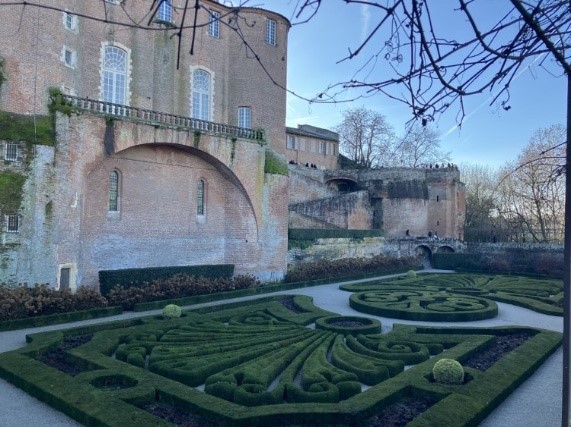
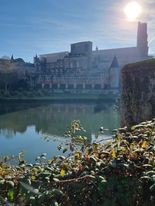
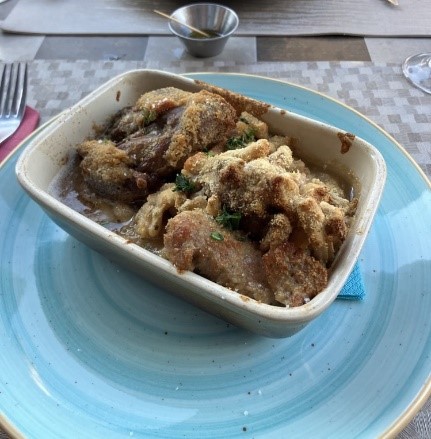
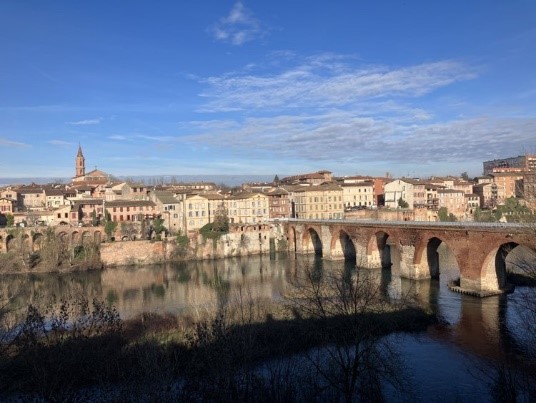
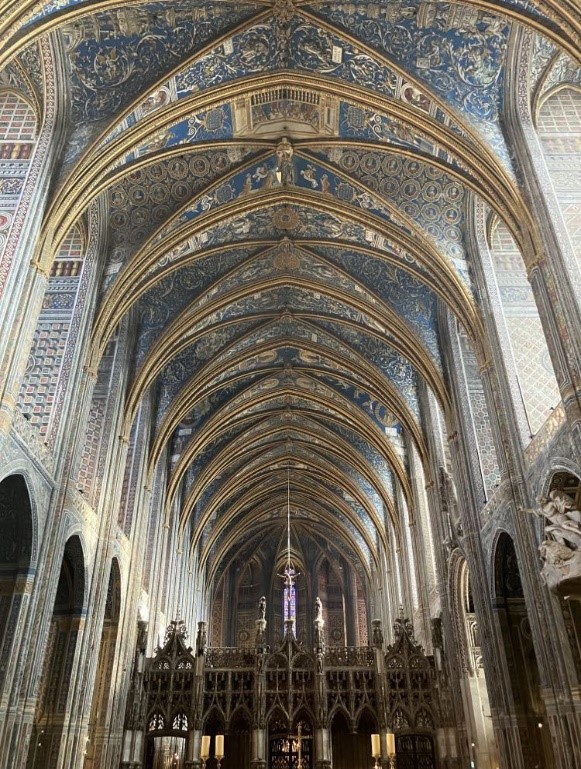
The most impressive part of Albi today is the cathedral, built in the aftermath of the Albigensian crusade by Bishop Bernard de Castanet, one of the city’s key Inquisitors. Its exterior is intimidating and fortress-like, a deliberate choice to emphasise the power of the bishop, his unity with the king, and his fierce resistance against heresy and religious enemies. The interior is beautiful and ornate, and as one might expect from a UNESCO World Heritage site, one of the most impressive and awe-inspiring sites of the trip.
I then wandered around the river Tarn, before settling into a lunch of cassoulet, a regional delicacy. In this restaurant, it was a stew consisting of haricot beans and duck confit, but the meat used can be pork, sausage, goose or lamb, among others. It was certainly an experience I wouldn’t have missed, but the richness of the meal did slow down my walking for the rest of the day.
In the afternoon, I went to another part of this impressive site, the Musee Toulouse-Lautrec, an art gallery situated in the former bishops’ accommodation. This included manicured gardens overlooking the river and the museum, which integrated both a wonderful art gallery and information about the building itself. Assisted by the lovely weather, Albi was a genuine highlight of the trip, and a day trip I would absolutely recommend to anyone travelling to Toulouse.
Day trip to Carcassonne – Violet le Duc’s masterpiece of restoration
On the final day, I caught a very scenic train to Carcassonne, with views of the Pyrenees in the far distance. It is by far one of the most extensive and impressive mediaeval structures I have ever seen, and I thoroughly enjoyed spending the whole day walking along the castle walls and in the old city. It honestly felt like walking back through time with the cobblestone and small winding sidestreets, also helped by the low crowd numbers in early January.
The city is prominent as a stronghold of the Cathars during the crusades, before falling in August 1209, with Simon de Montfort being appointed the new viscount. During his time in this position, he constructed many of the fortifications which we see today, although some form of military settlement had existed there from the Gallo-Roman times.
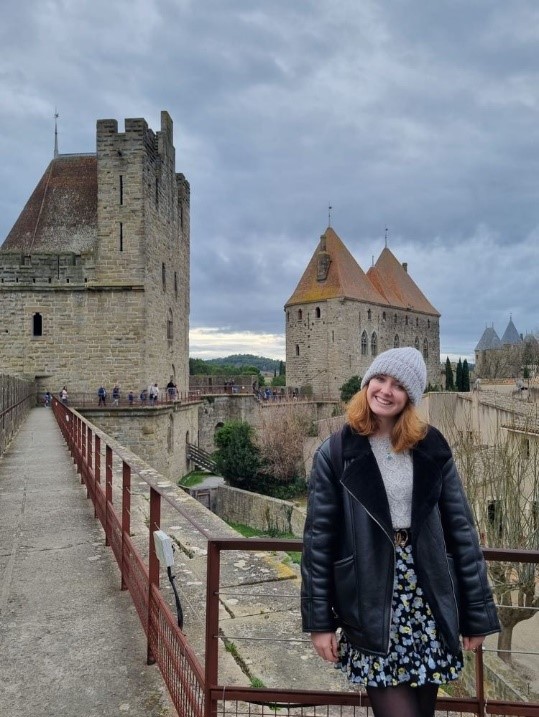
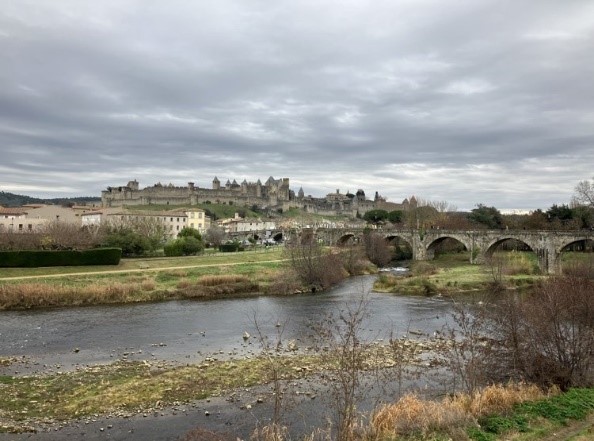
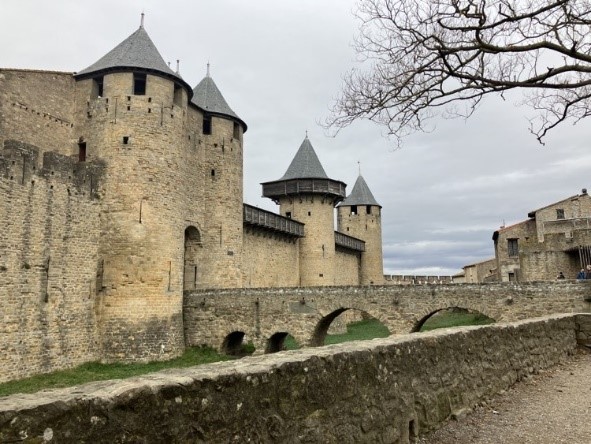
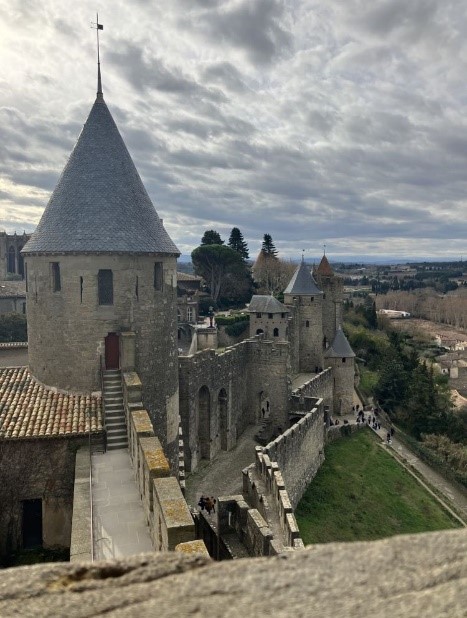
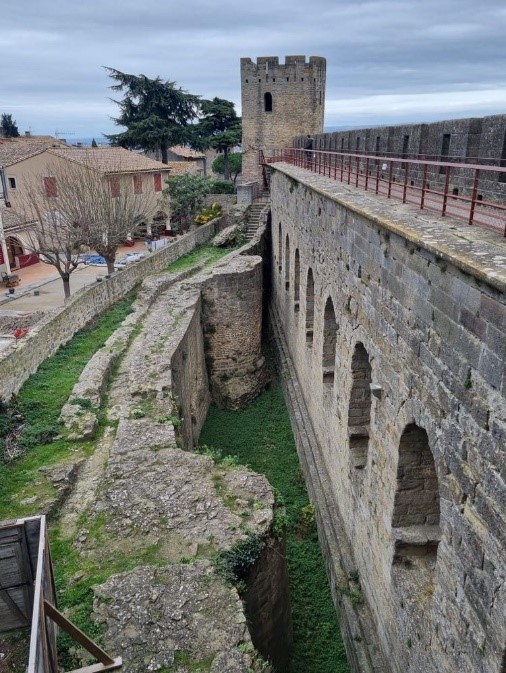
Carcassonne was on the frontline of military technological advances, evidenced by the use of double walls, watchtowers and defensive structures. In addition, Carcassonne was the first fortress to use hoardings, temporary wooden structures on the exterior of the castle to improve defenders’ line of sight and provide protection, during a siege. However, over the following centuries its military significance diminished and by the 19th century it was under threat of demolition.
Thankfully, the architect Eugène Viollet-le-Duc carried out extensive restoration work between 1853 and 1879 which recreated the mediaeval appearance of the castle. This storied history was covered in the very informative museum attached to the castle walls, which provided a fantastic view over the plain of Aude and certainly helped me to appreciate the strategic choice of the city’s location.
Ellie Owen (LS & Ha 13)
Find out more about travel grants
The Haileybury Society supports the educational and cultural enrichment of young OHs through a limited number of travel grants.
More from The Haileybury Society
- Now Published – The Haileybury Society Annual Report 2025

- Haileybury Rackets – A Proud Sporting Heritage
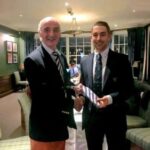
- William Miller (H 65)
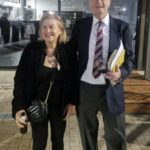
- Annual General Meeting 2025 – A Successful Gathering at the RAF Club

- Christmas Drinks at Lucy Wong’s
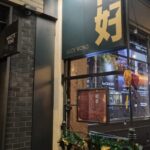
- Pushing His Limits: Phil Wistow’s HYDROX Challenge For Macmillan

Unless otherwise stated, all content and images on this website and blog © The Haileybury Society, 2024, all rights reserved
Search stories by date
Unless otherwise stated, all content and images on this website and blog © The Haileybury Society, 2024, all rights reserved